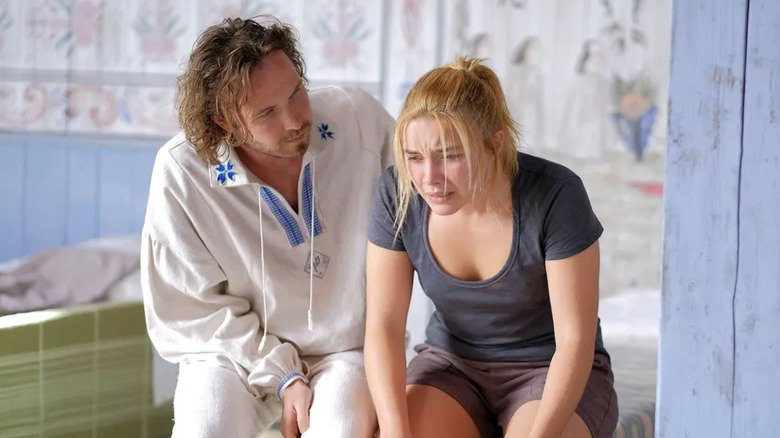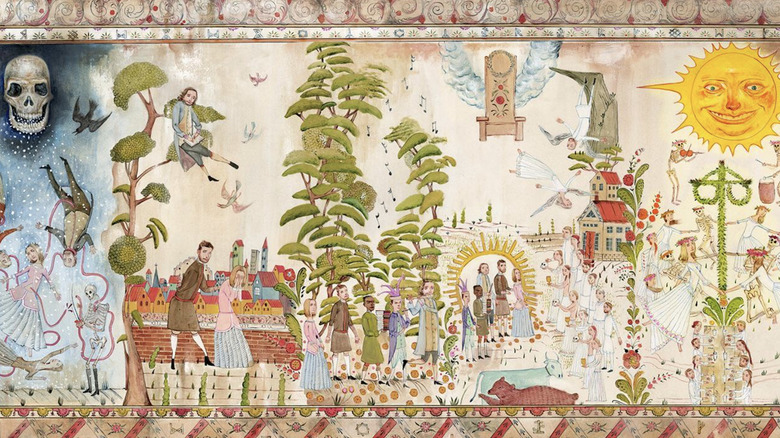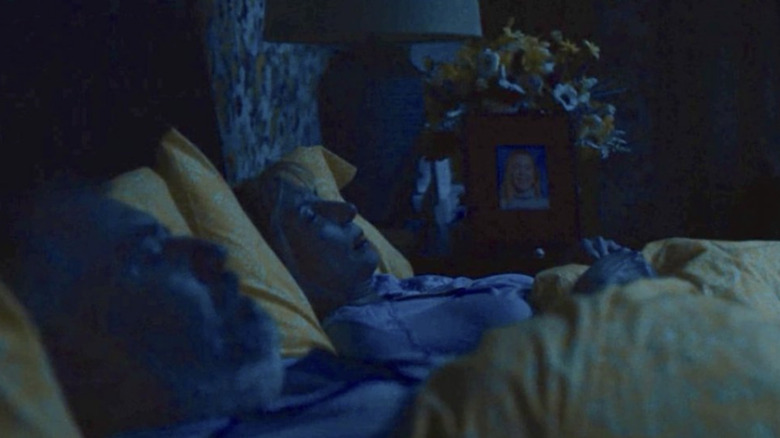Ari Aster Didn't Mind That Midsommar Might 'Give Away' Its Own Ending
Director Ari Aster made waves in 2018 with the release of "Hereditary," a slow-burn horror film with plenty of foreshadowing and truly disturbing imagery. The film had a way of sneaking creepy visuals into its story at the most unexpected moments, delivering scares that served a distinct purpose. Sharp editing and shot composition foreshadow events in the movie, such as the placement of creepy cult members that would later come into play in the film's climax.
Aster's clever knack for placing foreboding clues to the character's fates would carry over into his next movie, "Midsommar." Telling the story of college student Dani (played fantastically by Florence Pugh), "Midsommar" plays out like a breakup story with a Swedish folk horror backdrop.
Being the intriguing filmmaker he is, Aster chose to open the film with a mural that shows the film's entire plot before it happens, albeit in a stylized storybook manner. While the mural doesn't show how things play out beat for beat, it's a clear layout of the major story points that attentive viewers could pick up on, potentially spoiling the film before even watching it. However, Aster was fine with the possibility that the film might give its ending away, as he sees it as a better experience for the audience.
Encouraging audience engagment
In an interview with the LA Times discussing the film's ending, Ari Aster was asked about the mural and its potential to take away any investment in the movie. The director didn't think it would ruin the experience, but rather engage the audience and make the experience of watching "Midsommar" that much more rewarding:
"I like things that really encourage a more active audience engagement, and if there's a way to provide exposition in a way that makes the audience do a certain amount of work — that encourages them to lean in towards the movie as opposed to handing people that information — it's just more fun."
Henrik Svensson, production designer on "Midsommar," affirmed that while making the film, "giving too much away" was never a worry for those involved:
"We never talked about giving away too much because we always thought that this film had no real surprises in it. You know from the beginning more or less what's going to happen. And I never thought people would see that much [of the murals]. It's a lot of paintings, but most of them are in the background or out of focus. So we could really push it."
Aster's out-of-focus details are what make "Midsommar" a rewarding rewatch, allowing viewers to enjoy the film differently. Moreover, the hidden details make scenes chilling and eerie, accentuating the folk horror aesthetic with incredible subliminal details.
The devil is in the details
Blink-and-you'll-miss-it moments are abundant in "Midsommar," and once viewers catch them, it makes the film feel all the more eerie. One such detail is a bouquet that is conspicuously placed behind a picture of Dani, making it look as if there is a crown of flowers around her, teasing what's to come for her character in the story. There are also careful decisions that the production team made with set design, such as a picture hanging in Dani's room of a young girl and a giant bear, which is likely a hint to what becomes of Dani and her boyfriend Christian. Towards the end of the film, the face of Dani's deceased sister is hidden in the trees, linking the movie's harrowing opening to its oddly uplifting ending.
This incredible attention to detail shows Aster and his crew's passion for making "Midsommar" engaging for the audience, and rewarding them for playing close attention. The film delicately balances its precise production design with its psychedelic horror story, giving repeat viewers something different to enjoy each time they watch it. One could argue that things such as the opening mural detract from the story's suspense. However, horror often feels the most real when audiences discover creepy details for themselves, without the film explicitly drawing attention to them.


